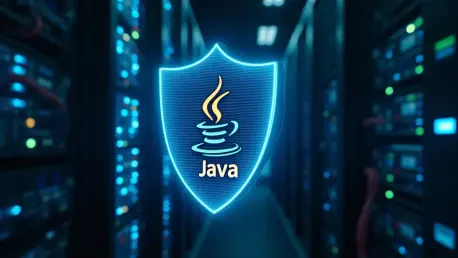In the rapidly evolving sector of Java development, the emphasis on security has grown immensely. As businesses leverage Java for extensive enterprise applications, the need to ensure cryptographic integrity and data protection becomes pivotal. Enter Oracle’s Jipher, a new cryptographic service provider that promises to bolster Java’s security framework. By incorporating the FIPS 140-2 validated OpenSSL module, Jipher addresses the increasing demand for robust security mechanisms in Java, particularly in environments regulated by security standards.
Overview of the Java Security Landscape
Currently, Java security confronts numerous challenges due to its widespread use across various platforms and industries. Existing security measures, although robust, continue to face issues related to evolving cybersecurity threats and compliance with regulatory standards. Cryptographic service providers play a critical role within the Java ecosystem, offering essential tools to secure application data. Major industry players continually innovate, integrating cutting-edge cryptographic technologies and strategies to advance the state of Java security. With the emergence of stringent regulations, the landscape for developers is progressively reshaping, enforcing adherence to validated security protocols.
Trends and Innovations in Java Security
Emerging Cryptographic Technologies
The dynamic field of cryptography has seen several advancements, primarily influenced by cutting-edge module development and the impending rise of quantum computing. As businesses seek future-proof solutions, post-quantum cryptography has gained traction within the Java environment, aiming to safeguard against potential threats posed by quantum computers. Standards such as FIPS have profoundly influenced these technological solutions, enabling the formulation of validated cryptographic mechanisms essential for ensuring secure Java applications.
Market Analysis and Future Outlook
Market analysis indicates a promising trajectory for Java security, with robust growth in cryptographic technology adoption. As digital transformation accelerates, industry data points toward a surge in demand for comprehensive security solutions. This growth is ushered by trends that emphasize the advancement of cryptographic modules and security algorithms applicable in the Java framework. Strategic forecasts project further enhancements, as industry stakeholders capitalize on innovations to address evolving security challenges and compliance mandates.
Challenges in Java Security Implementation
Despite innovations, Java security implementation is not devoid of hurdles. Technological complexities often pose significant barriers to adopting advanced security measures, leaving developers grappling with sophisticated frameworks and integration challenges. Furthermore, regulatory compliance remains a substantial concern, as developers must navigate the intricate landscape of security standards and mandates. Addressing these issues requires strategic solutions, including streamlined adoption practices and enhanced developer education to overcome existing hurdles effectively.
Regulatory Framework Impacting Java Security
At the heart of secure Java solutions are regulatory frameworks, particularly FIPS 140-2 standards, which denote essential security requirements for cryptographic modules. The role of regulatory bodies such as NIST is fundamental, as they shape security practices across industries by establishing benchmarks and guidelines. Compliance with these standards has become a pivotal concern for industry actors, inciting a concerted effort toward developing robust security solutions that adhere to regulatory prescriptions.
Future Directions for Java Security
The future of Java security is poised for transformative shifts as innovations continue to gain momentum. Disruptive technologies, including advanced cryptographic services, are expected to redefine security paradigms within Java applications. Additionally, consumer behavior and market demands will catalyze innovations, compelling developers to integrate user-centric solutions that balance security with functionality. The evolution of Java security solutions anticipates a landscape where security is seamlessly integrated, ensuring resilience against emerging threats.
Conclusion and Recommendations
Oracle’s introduction of Jipher highlights notable advancements in Java security, reinforcing its commitment to delivering standards-compliant solutions. Leveraging FIPS-validated solutions presents substantial growth opportunities for enterprises seeking to fortify their Java applications. As industry trends incline toward increasingly sophisticated security demands, stakeholders are encouraged to explore investment potentials within this expanding landscape. Emphasizing strategic adoption and compliance will allow businesses to harness advancements effectively, ushering in a secure digital future within the Java domain.









